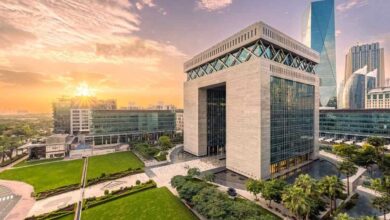
UAE’s real estate, tourism and aviation sectors stay strong
The Central Bank of the UAE (CBUAE) has said that despite the continuing global uncertainty and tight monetary stances worldwide, the UAE real estate sector continued its good performance in the period from July to October 2023.
The Central Bank, in its quarterly economic review 2023, explained that in the first nine months of 2023, the value of residential transactions in Abu Dhabi increased by 56 per cent year-on-year (YoY) to Dhs67.8 billion. According to REIDIN, the average sales price of residential properties in Abu Dhabi registered a 3.2 per cent increase in Q3, 2023 compared to the same period a year ago.
In October 2023, sales price growth accelerated to 3.9 per cent YoY. Average rent continued its upward trend, marking a YoY increase of 0.8 per cent and 2.6 per cent in the third quarter and October 2023, respectively, after an increase by 0.5 per cent YoY in Q2 2023. This resulted in an average rental yield of 6.2 per cent in Q3 2023, broadly unchanged compared to 6.3 per cent in October.
Additionally, the report pointed out based on Dubai Land Department (DLD) data during the first 10 months of the year, the value of real estate transactions in Dubai surged by 37 per cent YoY, surpassing Dhs 500 billion. The volume of real estate transactions conducted in the initial three quarters of the year increased by 36 per cent YoY accounting for more than 116,000 transactions.
The number of new investors in the Dubai’s real estate market increased by 15 per cent YoY in the first three quarters of 2023, compared to that of 2022. Average residential property sale price in Dubai increased on average by 0.3 per cent YoY in Q3 2023. Average rent increased by 12 per cent YoY in Q3 2023, decelerating to 5.7 per cent YoY in October. This resulted in an average rental yield of 8.8 per cent in Q3 2023, broadly unchanged with respect to the 8.7 per cent registered in October.
Regarding tourism and hospitality, the report mentioned that the UAE has initiated the National Tourism Strategy 2031, part of the “Projects of the 50” aiming to establish itself as a top global tourism destination by 2031. The plan targets to raise the tourism sector contribution to GDP by Dhs450 billion in addition to attracting investments worth Dhs 100 billion and hosting 40 million hotel guests annually by 2031.
In the first eight months of 2023, the Abu Dhabi’s hospitality sector performed strongly. The total number of hotel guests increased to 3.2 million, a 31 per cent rise compared to the previous year. Hotel occupancy rates were at 70 per cent, with guests staying an average of 2.6 nights.
The CBUAE report stated the first three quarters of 2023 data indicate that Dubai continues to be a prominent hub for global tourism. Hotel occupancy has increased to 75.7 per cent, marking a rise of 4.9 percentage points from the same period in 2022 and exceeding 2019’s figures by 2.3 percentage points. Although the average stay per guest decreased from 4 to 3.7 nights, the total number of occupied room nights saw a YoY increase of 13 per cent in 2023 and a 32 per cent growth from 2019, reaching 30.4 million nights.
The report further stated that Abu Dhabi International Airport experienced a substantial increase in passenger traffic, reaching almost 6 million passengers in Q3 2023, 29.3 per cent YoY. The airport also registered 37,903 aircraft movements in Q3 2023, marking a 21.8 per cent increase from Q3 2022. Moreover, Abu Dhabi’s global reach has notably widened, with 119 destinations now accessible via 24 airlines from the airport. In the third quarter of 2023, the most frequented routes were to London, Mumbai, and Kochi. In addition, the Abu Dhabi International Airport’s Terminal A opened in November 2023 and is expected to significantly boost the airport’s overall capacity.
Dubai Airports has updated its forecast for 2023, now expecting 86.8 million passengers, an increase from the previously anticipated 85 million. This revision indicates that Dubai International Airport is on track to exceed its pre-pandemic passenger traffic of 86.3 million in 2019. In the first three quarters of the year, the airport managed 64.5 million passengers, with a notable 22.9 million recorded in Q3, coinciding with peak summer travel. This represents a 39.3 per cent increase from the same period in 2022 and is 1 per cent higher than in 2019.





